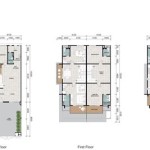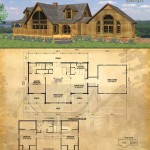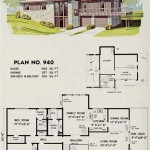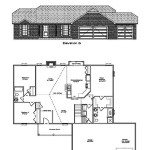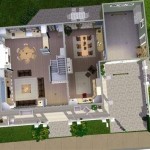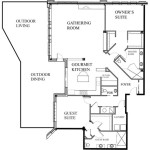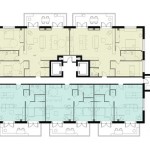Architecturally Designed Home Plans
Architecturally designed home plans represent a significant departure from standard, off-the-shelf house plans. They offer a bespoke approach to residential design, tailoring the home to the specific needs, lifestyle, and site conditions of the client. This level of customization results in a unique dwelling that reflects individual preferences and maximizes the potential of the property.
The process of developing architecturally designed plans typically begins with an initial consultation between the client and the architect. During this meeting, the architect gathers information about the client's vision, budget, desired functionalities, and the characteristics of the building site. This information forms the foundation for the design process.
Following the initial consultation, the architect develops preliminary design concepts. These concepts are presented to the client as sketches, drawings, and sometimes 3D models. This stage allows for feedback and revisions, ensuring the design aligns with the client's expectations. The back-and-forth communication between architect and client is crucial in refining the design and achieving a shared understanding of the project.
Once the preliminary design is approved, the architect proceeds to develop detailed construction drawings. These drawings provide specific dimensions, materials specifications, and construction techniques necessary for builders to accurately construct the home. The level of detail in these drawings is significantly greater than that found in pre-drawn plans, allowing for precise execution of the design.
The benefits of opting for architecturally designed home plans are numerous. One primary advantage is the ability to create a truly custom home that reflects individual style and needs. Whether it's a preference for a specific architectural style, a desire for unique features, or the need to accommodate a particular lifestyle, an architect can translate these requirements into a tangible design.
Furthermore, architecturally designed plans can optimize the use of space and natural light. Architects are trained to consider factors such as solar orientation, prevailing winds, and views when designing a home. This expertise can result in energy-efficient homes that are comfortable and aesthetically pleasing.
Integrating the home seamlessly with its surrounding environment is another key benefit. An architect considers the topography, vegetation, and existing structures on the site to create a design that complements its context. This approach can enhance the overall aesthetic appeal of the property and minimize environmental impact.
Addressing specific site challenges is also a strength of architecturally designed plans. Difficult terrain, unusual lot shapes, or restrictive building codes can present obstacles for standard house plans. An architect can develop creative solutions to these challenges, ensuring the home is both functional and compliant with regulations.
While the upfront cost of architecturally designed plans may be higher than purchasing pre-drawn plans, the long-term benefits often outweigh the initial investment. A well-designed home can improve energy efficiency, reduce maintenance costs, and increase resale value.
The collaborative nature of the architectural design process is another important aspect to consider. Clients are actively involved throughout the design stages, ensuring the final product meets their expectations and fulfills their vision. This collaborative approach fosters a sense of ownership and pride in the finished home.
Choosing an architect is a critical step in the process. It is recommended to research architects with experience in designing the desired style of home and a proven track record of successful projects. Reviewing portfolios and obtaining client testimonials can provide valuable insights into an architect's capabilities and working style.
Beyond the aesthetic considerations, architecturally designed plans offer the opportunity to incorporate sustainable design principles. Architects can integrate energy-efficient materials, passive heating and cooling strategies, and water conservation measures into the design, minimizing the environmental footprint of the home and reducing long-term operating costs.
The flexibility offered by architecturally designed plans is another notable advantage. Life circumstances and needs can change over time. A well-designed home can be adapted to accommodate these changes, whether it's expanding the living space, adding accessibility features, or incorporating new technologies.
In conclusion, while pre-drawn house plans may suffice for some, those seeking a truly custom home tailored to their unique needs and site conditions should strongly consider the benefits of architecturally designed home plans. The investment in professional design expertise can result in a home that is not only aesthetically pleasing but also functional, efficient, and a reflection of personal style.

House Plans Home Floor Architecturalhouseplans Com

House Plans How To Design Your Home Plan

Architectural Designs House Plans Archdesigns Official Account

Architectural Designs House Plans Archdesigns Official Account

House Plans How To Design Your Home Plan

Home Plan House Designers In Bangalore Buildingplanner

Exclusive Transitional Country Home Plan With Pool Concept And Office 93052el Architectural Designs House Plans

Where You Can Buy House Plans Live Home 3d

Search Architectural Design Home Plans Blueprints By Style Homeplans Com

Architectural Design House Plans Everyone Will Like Acha Homes

